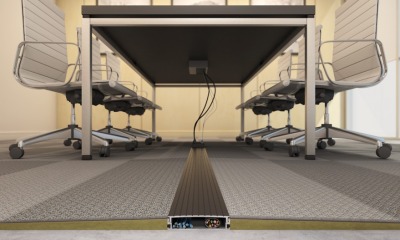Business
Moving Up The Ladder: Office Relocation

Relocation is a nightmare of every business owner. You want it done as efficiently and quickly as possible, without fuss and unpredictable financial outbursts. There may be many reasons for that, but it’s usually a matter of expansion and/or rent issues. No matter the reason, every boss will try to up the ante with new working space, and offer an even better environment for his or her employees. Therefore, if you intend to move up the ladder with your new office space, we need to discuss certain aspects of relocation.
Plan ahead
No matter how it turns out, office relocation will be a stressful business. As mentioned above, the important thing is to make this ordeal as efficient as possible, and to do this, you have to start with careful planning.
First of all, as you start making all the necessary plans, you don’t have to rile up your employees. While you are at this stage, it can only serve to create tension that will add up to nothing. After most of the plans have been etched in stone and you’ve coordinated and delegated duties to your HR and Operations departments, it’s time to break the news.
As far as basic checklist goes, the things you need to be mindful of are – distance between the old office and the new, proximity to clients and employees, workforce relocation, equipment moving logistics and the cost of the entire undertaking.
Keep the cogs turning
You can assess the worst-case scenario time window you’ll need to do a complete relocation and keep various departments of your company still running as the process of movement takes place. The best course of action is to, of course, move the company in one go to an adequate office space.
You don’t want the workflow to be too mangled by this process, as the last thing you need is to see your employees lose the steam. After all, you are a business, and time is money. However, it’s in the nature of things that unpredictable turn of events shows its ugly head from time to time. You have to be prepared for this.

You’ll lose money and that’s fine
Because of the unpredictability inherent in the process, you have to stay calm when additional expenditures begin to settle in. These financial outflows can increase disproportionately in the blink of an eye, and you can prevent some of these if you knew where the rough outline of the “menu” and see where the leaking might occur.
On the other hand, moving to another location might force some of the employees that you value very much to quit. The leading reason for this is that the new location ends up being too far away from their home, and they can’t move due to another private issue. Hiring new blood and training them to become as efficient a worker as your previous employee is another expense you’ll have to face.
Services are a life saver
You also have to know where to spend money in order to save it. In some cases, if the company is small enough, you can rely on the muscle of people from operations department to deal with the heavyweight moving.
However, in most situations, hiring professionals will eliminate or reduce all the potential problems mentioned above, and these Sydney’s pros for office removals know how to make you feel as if the relocation had never happened. You’ll also want to build a strong connection to one particular moving company because statistics have shown you’ll need their services again sooner rather than later (if you are renting space for your business, it’s likely you’ll move once again to a new location in three years).

Bonus factor: Employee happiness is a factor
Relocation is not only stressful for you. The happiness of your employees means better business performance, so you’ll have to take this into consideration and use the opportunity of new space to design an office for maximizing employee contentment.
On the other hand, in spite of your best efforts, certain changes are inescapable. As a boss, you have to be at peace with the fact that a chunk of your workforce simply won’t be content, and if they decide to move on, you’ll have to let them go.
Office relocation is a gargantuan undertaking with many moving pieces, and if your business is large enough, you can’t micromanage everything. As a CEO, you have to surround yourself with capable people you can trust and rely on them to take the bulk of the burden. Letting this happen does not make you weaker or less respectable in any way. After all, the idea is to make a change that will benefit everyone in the long run, including the clients. The companies that refuse to make necessary changes usually wither and disappear.
-

 Tech11 years ago
Tech11 years agoCreating An e-Commerce Website
-

 Tech11 years ago
Tech11 years agoDesign Template Guidelines For Mobile Apps
-

 Business6 years ago
Business6 years agoWhat Is AdsSupply? A Comprehensive Review
-

 Business10 years ago
Business10 years agoThe Key Types Of Brochure Printing Services
-

 Tech8 years ago
Tech8 years agoWhen To Send Your Bulk Messages?
-

 Tech5 years ago
Tech5 years ago5 Link Building Strategies You Can Apply For Local SEO
-

 Law5 years ago
Law5 years agoHow Can A Divorce Lawyer Help You Get Through Divorce?
-

 Home Improvement6 years ago
Home Improvement6 years agoHоw tо Kеер Antѕ Out оf Yоur Kitсhеn








































